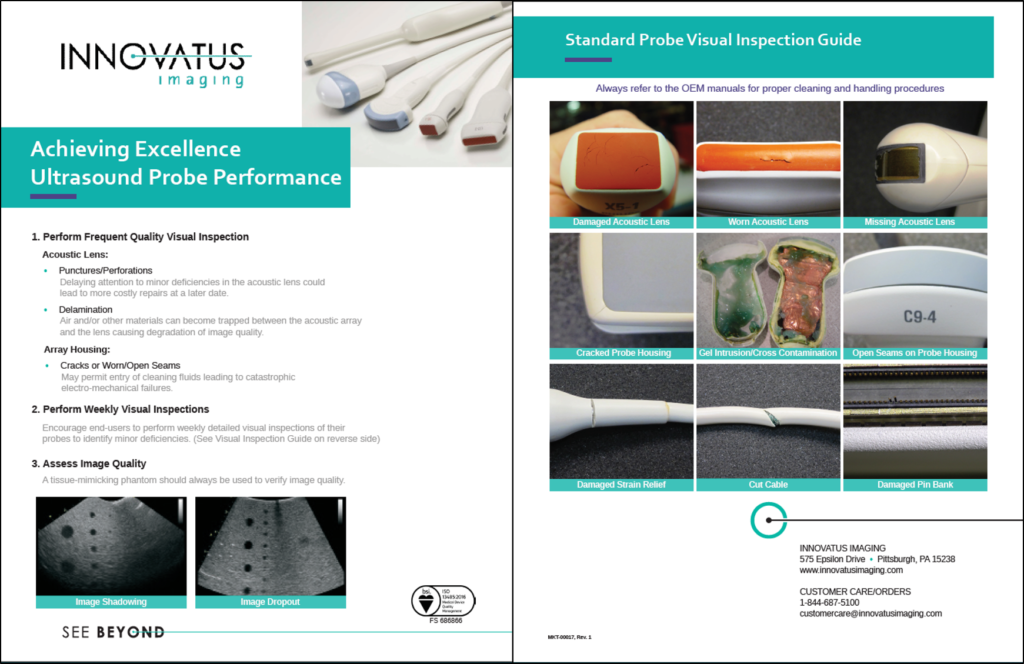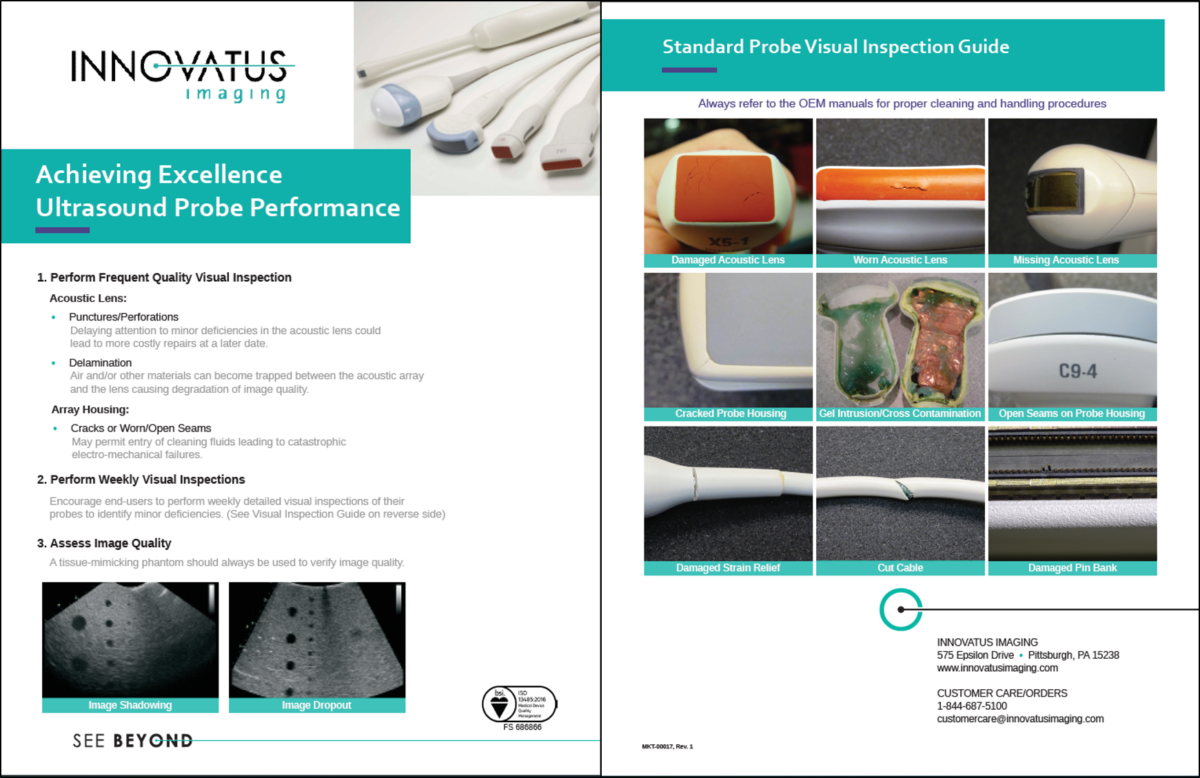It’s a given that your service team needs ongoing, specialized in-depth training on maintaining and troubleshooting the devices in your imaging departments. However, sometimes the soft training, training on strategies and processes for lowering your costs, optimizing performance and increasing device lifecycle can be missed. Below are 5-steps for increased probe lifecycle using our visual inspection guide and partnering with your sonographers for prevention and early detection.
One very effective strategy for reducing costs associated with supporting ultrasound is partnering with your sonographers with respect to visual inspections. To help engage your customers, we’ve created a Visual Inspection Guide that can be posted in any exam room. It helps keep the importance of inspections top-of-mind, shows real examples of common issues and highlights the potential results of the little things that can lead to big problems.

Following are 5-steps for increased probe lifecycle
- BEGIN with the department manager to gain acceptance and understanding
- REQUEST 15 minutes of their department meeting
- EXPLAIN the key role that end-users play in helping to reduce costs through prevention and early detection
- SHOW examples using the visual inspection guide
- POST in each exam room and cleaning area to raise awareness
Tip: Each week (same time, same day), a different sonographer would visually inspect every probe in the department reporting any concerns to Clinical Engineering.
Ben Franklin said, “An ounce of prevention is worth a pound of cure” (or time and money in this business) and it’s still true today. Visit the Resource Page on our website to access our updated visual inspection guide and other material to help you better manage and extend your device lifecycles. All of our material is available in hard copy as well. Reach out to info@innovatusimaging.com to request.

